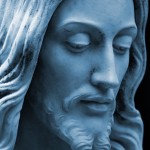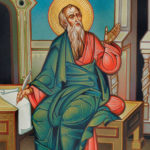Defending Mythicism: A New Approach to Christian Origins
by Dr. Richard Carrier
Filed under Historicity
EDITOR'S NOTE: Today continues our four-part series on the historical evidence for Jesus. Popular atheist writer Richard Carrier began Monday with an article titled "Questioning the Historicity of Jesus". Yesterday, Catholic writer Jimmy Akin responded with his piece, "Jesus Did Exist". Today, Richard offers his take on “Four Reasons I Think Jesus Really Existed" by Trent Horn. Finally tomorrow, Trent will provide a rejoinder.
Strange Notions has featured two articles defending the historicity of Jesus, and I was asked to write a short piece on how we advocates of the alternative view respond to the kind of arguments in them. I addressed one of them in a previous installment. Here I’ll address the other.
In “Four Reasons I Think Jesus Really Existed”, Trent Horn offers four reasons to conclude Jesus existed. The fourth is that this is currently the mainstream position. But so once was the view that Moses was historical, as I explained in my previous article. The mainstream position now is that he was not. And that change began with a small number of scholars challenging the mainstream position of the time. So we must be wary of arguments from authority. Particularly when the authorities in question have no working methodology and can reach no consensus on which historical Jesus the evidence supports (as I’ve shown in chapters 1 and 5 of Proving History). As I noted in my previous article, even some of those authorities affirming historicity (like professor Philip Davies) agree mythicism is at least worth examining.
Horn’s remaining reasons are the same ones mythicists have long found suspect, for reasons even Jimmy Akin was aware, as I noted in my article (see Akin’s “Did Jesus Exist? An Alternate Approach”.)
Horn’s third reason is that there is evidence corroborating the Gospels. But there actually isn’t. He relies on the references in Josephus—which I explained in Part I are both too suspect to count as evidence. But even if they were counted, they cannot be shown to be independent of the Gospels, and thus are not known to independently corroborate them. Likewise the passage in Tacitus, which comes twenty years later (nearly a hundred years after the movement began).
Horn’s second reason is that “the early church fathers don’t describe the mythicist heresy,” but we have no writings from “church fathers” until the late second century, a century and a half after the movement began and almost a century after the Gospels were even written. What was being said in those missing 50-100 years? We pretty much don’t know. We don’t know what heresies, for example, Papias mentioned—because only a few scattered quotations of him were preserved. The church threw his books away so we don’t get to read them. And yet even he wrote most likely near the mid-second century, so even if we had his works it might not be much help. Who was writing in the late first century about the various “alternative sects” of Christianity then, when the Gospels were first spreading a historical version of Jesus? We don’t even have a single name. Much less any book on the subject. Not even a quotation. We simply don’t know what was being said then. And we can’t argue from the silence of authors and documents we don’t have.
There is some evidence of mythicist sects that slipped through medieval church censors and selectors. The New Testament itself mentions a rival sect teaching that the Gospels were fabricated myths (2 Peter 1:16-2:2, commonly agreed to be a forged letter most likely originating in the second century). And manuscript evidence suggests that the second century apocryphal text The Ascension of Isaiah originally depicted Jesus being killed by Satan and his demons in the lower heavens (and not on earth), exactly as the mythicist thesis proposes. Even some of the “other sects” discussed by later authors like Irenaeus appear to have imagined Jesus was born in the heavens, not on earth, and regarded stories about him to be allegories, not biographies.
But we don’t expect more than hints to survive. Because the sect that gained power in the fourth century and decided what documents to preserve or quote and which to discard or leave in silence had no reason to preserve anything that challenged their version of Christian origins. We thus see that east of the Roman Empire, a sect of Christians beyond their reach still believed Jesus was killed around 80-70 B.C. (under the reign of king Jannaeus) and not under Roman rule a century later. This sect was in fact the original Torah observant sect, still called the Nazorians (as I explained in Part I, one of the original names for the Christian movement). But we only know about this because Epiphanius chanced once to mention it, and this was the only sect the authors of the Babylonian Talmud knew. We otherwise have not a single surviving document from or about them.
So arguments from silence cannot prevail against mythicism. We have no reason to expect any such evidence to survive, and yet still even have some hints in the evidence that did survive.
Finally, Horn's first reason is that “St. Paul knew the disciples of Jesus.” This is a common myth of modern times. It is a myth because Paul never once calls anyone a disciple. The word is nowhere to be found in his writings. Paul only knows of apostles like himself, and so far as he ever mentions, apostles became apostles by receiving visions of Jesus (1 Corinthians 9:1, 15:5-8; Galatians 1), not by having met him in person. Paul never once mentions anyone having done so. Which is actually strange. It’s one of the strangest things there is about the epistles of Paul, and one of the main reasons serious scholars are considering mythicism as a viable alternative of Christian origins.
Horn concludes with what mythicists do generally concede is “the most powerful argument against the Christ-Myth theory,” that Paul mentions having met “brothers of the Lord” (although not “brothers of Jesus” or “brothers of Jesus in the flesh”). But all Christians were “brothers of the Lord.” Jesus was “the firstborn among many brethren” (Romans 8:29). All baptized Christians were the adopted “sons of God” (Romans 6:3-10) and thus were only “brothers” because they were brothers of their common Lord (Romans 8.15-29, 9.26; Galatians 3.26-29, 4.4-7). We cannot tell from his letters themselves whether Paul means brother of the Lord by adoption, or brother of the Lord biologically. So we cannot conclusively prove that he is referring to actual brothers of a historical Jesus, rather than spiritual brothers of a celestial Jesus.
Obviously a great deal more can be said on all these points. As I noted in Part I, I treat all the objections and suggestions and debates surrounding all the evidence in my forthcoming book. I was asked here to be brief. But this at least can give you an idea of where this new approach to Christian origins is coming from. There can be good and bad arguments on either said of the debate. And nothing I have said here ends any argument. But when all the bad arguments are cleared, I find that all the good arguments left over weigh more strongly against historicity. Not, perhaps, enough to be certain Jesus didn’t exist. But certainly enough to be uncertain if he did.
Related Posts
Note: Our goal is to cultivate serious and respectful dialogue. While it's OK to disagree—even encouraged!—any snarky, offensive, or off-topic comments will be deleted. Before commenting please read the Commenting Rules and Tips. If you're having trouble commenting, read the Commenting Instructions.













